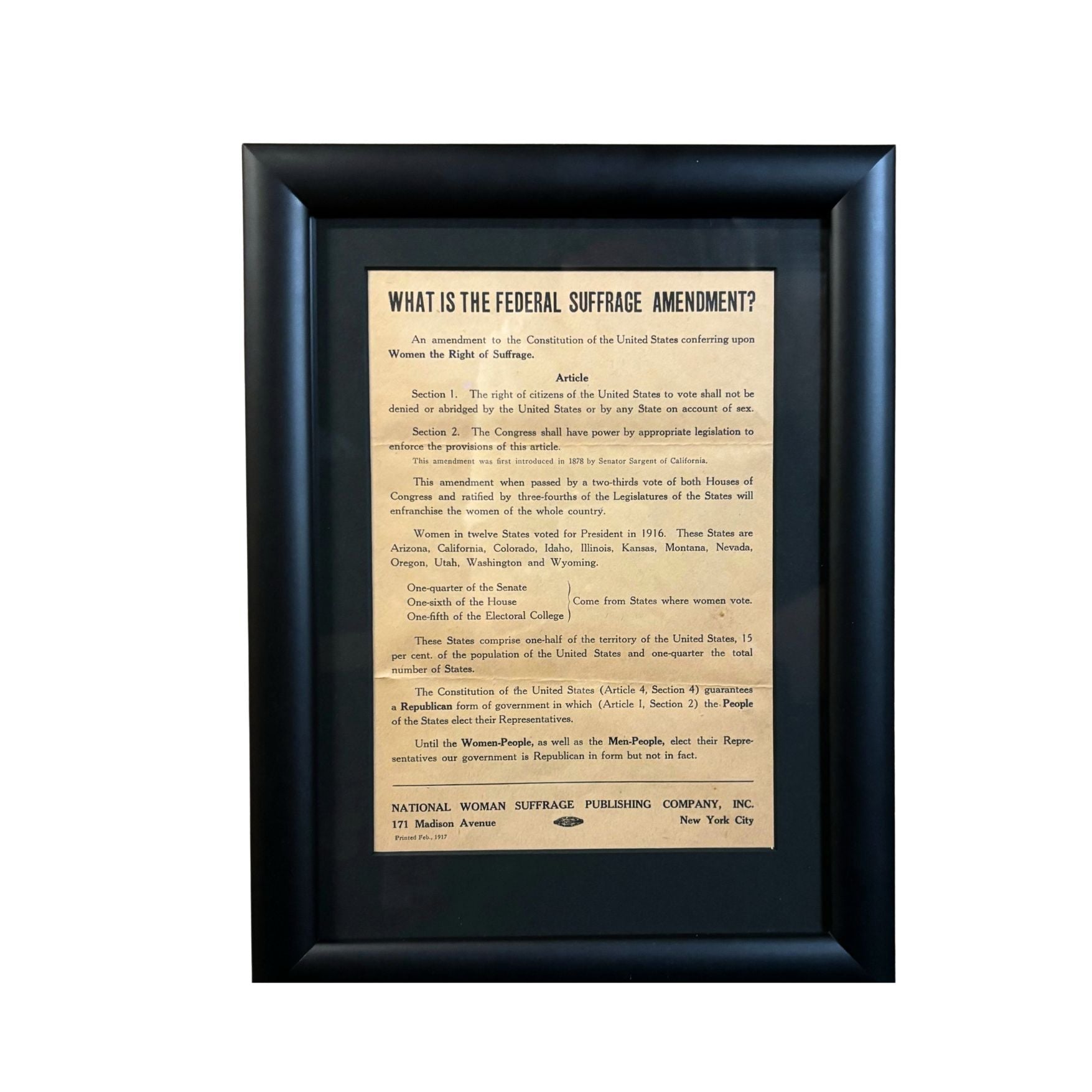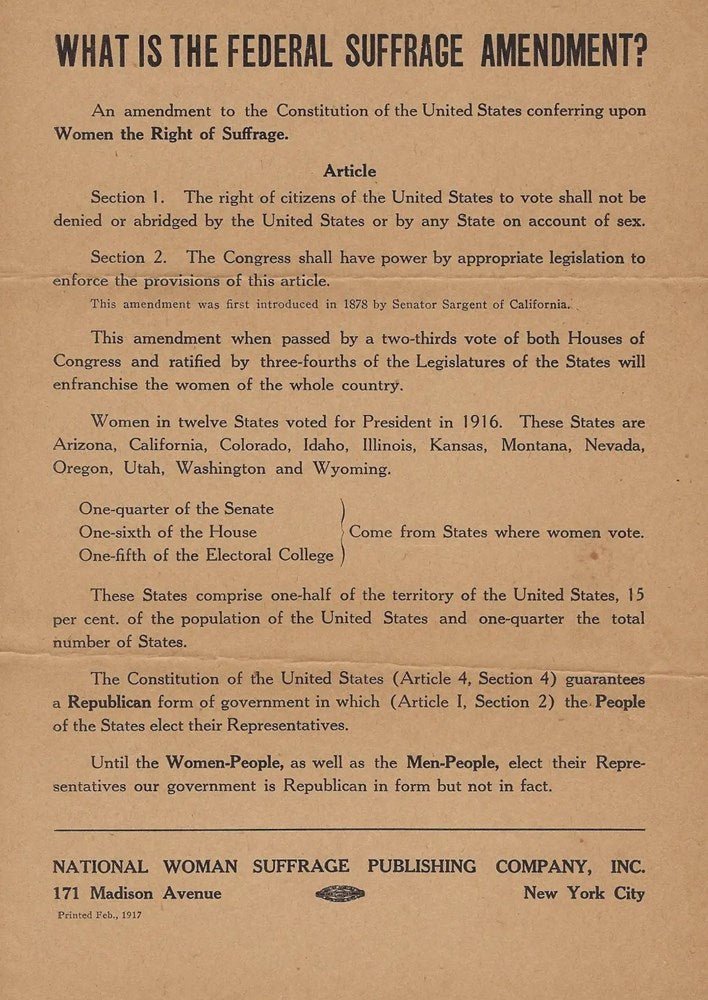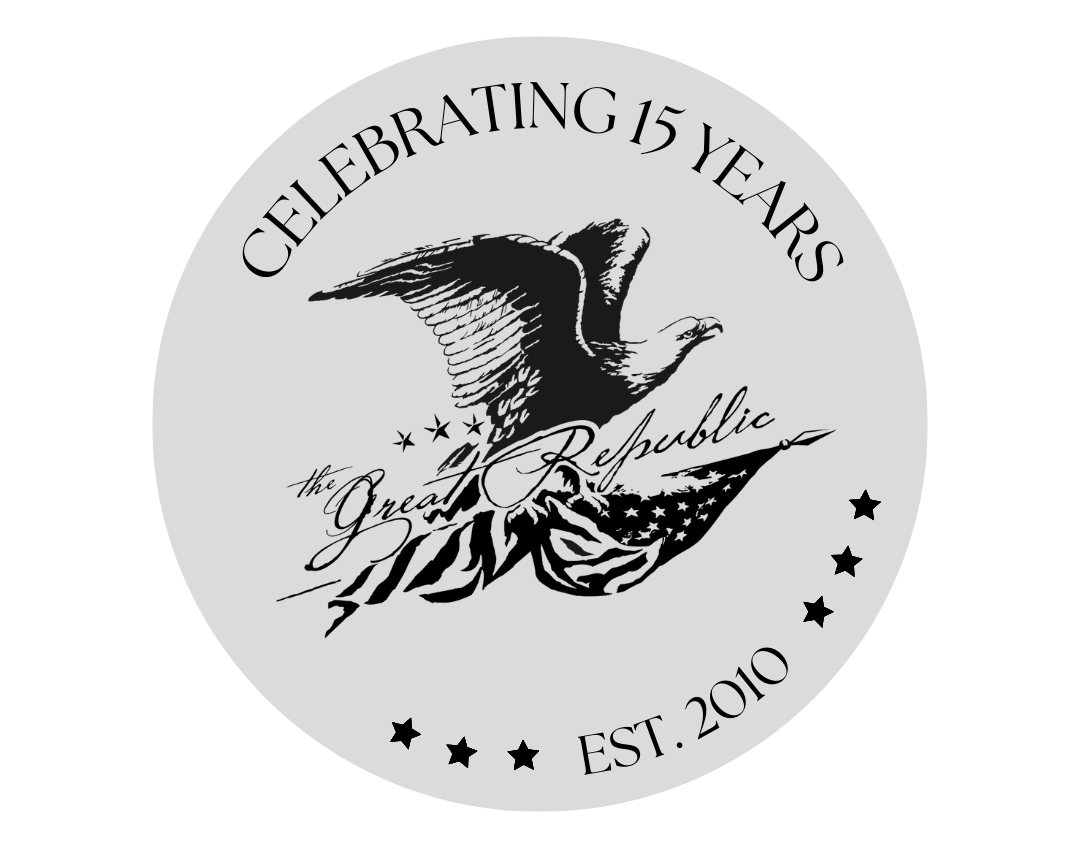

"What is the Federal Suffrage Amendment?" National Woman Suffrage Broadside, 1917
Presented is an original National Woman Suffrage broadside, titled “What is the Federal Suffrage Amendment?” The document was published in New York, in February of 1917 by the National Woman Suffrage Publishing Company, Inc.
Published just three years before the 19th Amendment was passed, this rare broadside advocates for women’s right to vote on a national level. The document lists states that have already passed women’s suffrage on a local level, as well as where women’s votes counted in the 1916 Presidential election. It references rights guaranteed in the Constitution and ends with the line: “Until the Women-People . . . elect their Representatives our government is Republican in form but not in fact.” This is a very scarce suffrage broadside, with no copies yet recorded in American institutions.
In 1848, Elizabeth Cady Stanton and Lucretia Mott organized the first women’s rights convention of abolitionist activists in Seneca Falls, New York. As a result of that meeting, the document containing a demand for women’s suffrage, right to education, and right to employment was drafted. Modeled after the "Declaration of Independence," their “Declaration of Sentiments” proclaimed “that all men and women are created equal, that they are endowed by their creator with certain inalienable rights, that among these are life, liberty, and the pursuit of happiness.”
Over the next 50 years, numerous women’s groups were formed and conventions were hosted to bring strength to the suffrage movement. In May 1869, a group called the National Woman Suffrage Association was founded by Elizabeth Cady Stanton and Susan B. Anthony. They fought for a universal-suffrage amendment to the U.S. Constitution and even opposed the 15th Amendment because it excluded women. In contrast, the American Woman Suffrage Association, founded in 1869 by Lucy Stone, Julia Ward Howe, and Thomas Wentworth Higginson, supported the 15th Amendment and concentrated on gaining women’s access to the polls at state and local levels. They believed that smaller victories on the local level would gradually build support for national action on women's suffrage.
In 1890, the NWSA and AWSA merged into the National American Woman Suffrage Association (NAWSA). It became the largest woman suffrage organization in the country and led much of the push for the vote through 1920, when the 19th Amendment was ratified. Stanton was named president, Anthony was vice president, and Stone was named chairman of the executive committee. In 1919, the NAWSA reorganized into the League of Women Voters.
While a handful of Western states granted women the right to vote in the late nineteenth and early 20th centuries, many Northeastern and Southern states refused suffrage. The NAWSA recognized that only an amendment to the Constitution would grant all women the right to vote. For 42 years, the women’s suffrage amendment had been introduced at every session of Congress, but ignored or voted down. But by 1918, both political parties were committed to women’s suffrage, thanks in part to the major role women played in World War I. The amendment was passed by two-thirds majorities in the House in January of 1918 and in the Senate in June of 1919. On August 18th, 1920, Tennessee became the 36th state to ratify the amendment, giving the two-thirds of state legislators necessary to ratify the amendment. On August 26th, the Nineteenth Amendment became part of the Constitution, and stated the following: “The right of citizens of the United States to vote shall not be denied or abridged by the United States or by any State on account of sex. Congress shall have power to enforce this article by appropriate legislation.”
CONDITION:
Very good condition. Printed broadside. National Woman Suffrage Publishing Company, Inc., New York: Feb. 1917. Paper has even toning. Two horizontal creases. 3 small tears along the right edge, 1 top edge. Tiny chip top left corner. Unframed Dimensions: 10” H x 7” W.
Broadside is artfully and archivally framed in a custom-built black wooden frame, with UV glass, and acid-free backing. Framed Dimensions: 13 1/4" H x 10" W x 1" D.
Accompanied by our company's letter of authenticity.
Pickup available at Colorado
Usually ready in 4 hours

"What is the Federal Suffrage Amendment?" National Woman Suffrage Broadside, 1917
Colorado
1 Lake Avenue
Colorado Springs CO 80906
United States
Choose options


Frequently Asked Questions
FAQs
Yes, all of our Antiques are certified authentic. Every antique comes with a signed Letter of Authenticity that details the item’s history, its current condition including any conservation, binding, or framing work, and the item’s provenance. The Letters of Authenticity are priced valuations by our authentication specialists, who assure that items are original and unconditionally guaranteed as genuine for life.
We pack and ship your items from our gallery in Colorado Springs. You may also choose to come pick up your order. Antique items are carefully packed and insured during shipping. The shipping price will be calculated at checkout.
We acquire from a variety of trusted sources all over the world, but mostly through auctions and private collections within the United States. All provenance information will be listed on the Letter of
Authenticity accompanying your purchase.

